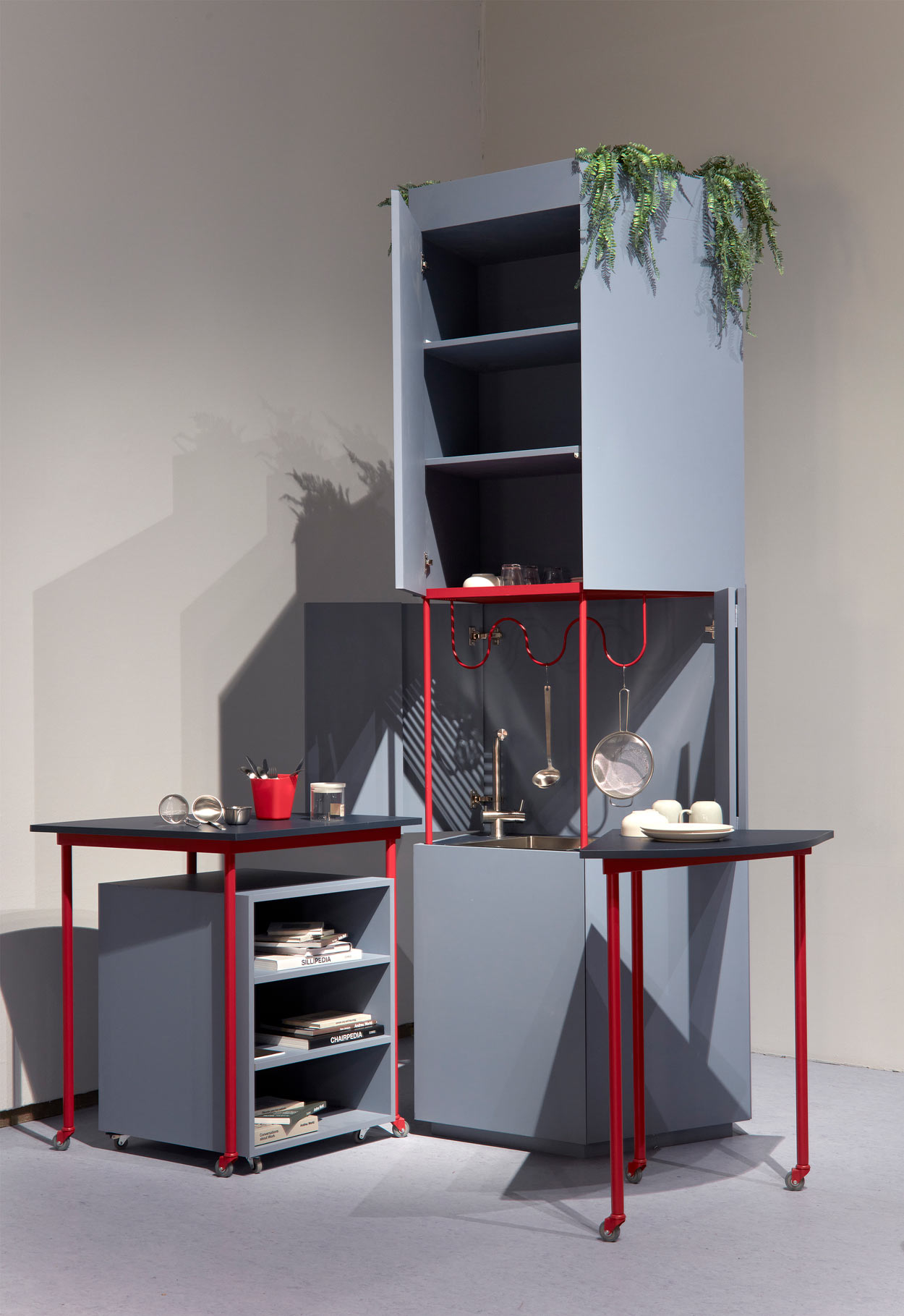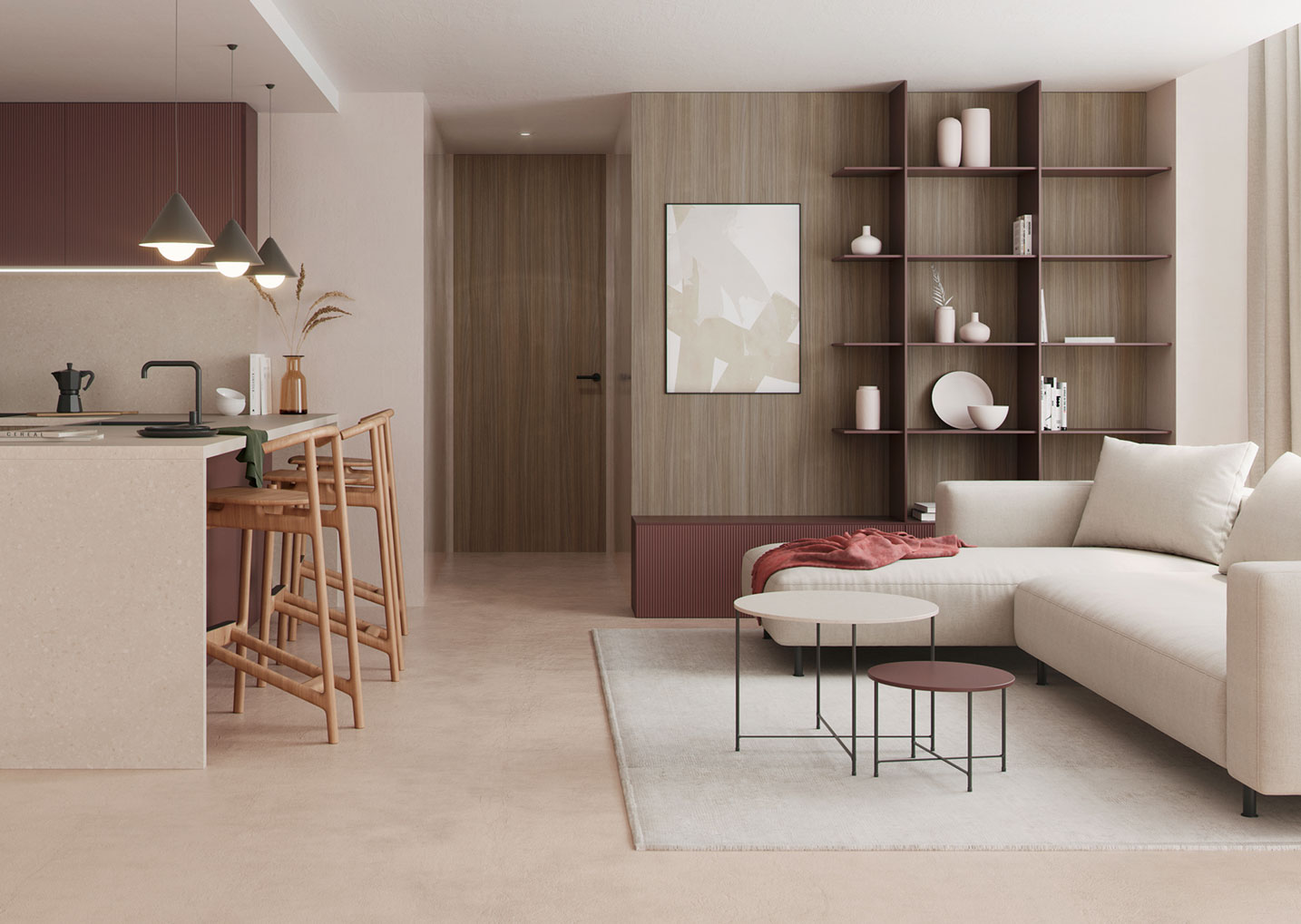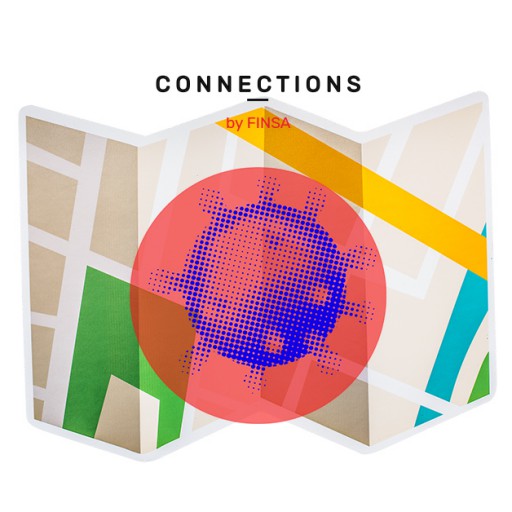Homes have undergone a flexible and adaptive shift towards living: a broader concept that includes typologies such as coliving or senior living. We have analyzed the trends that have settled in the market and detected the ten interrelated keys to consider when approaching a project to live in harmony with the current moment.
Practical living
Homes no longer have to be magazine-worthy. The focus is on pragmatism and durability, connecting with our real values and needs. We also assume that moving is no longer the ordeal it used to be a couple of times in a lifetime… Nomadism forces us to change locations more frequently than in the past, so we must travel lightly.
Watch on TikTok
Reduced spaces
The reduction in square footage directs us towards greater dynamism and simplicity in conceptualizing living spaces. This is evidenced by the rise of furniture pieces that fit together, maximizing the space they occupy. Hacking is also becoming an industry response, with manufacturers already designing products to be modified. Something as simple as chair covers or interchangeable upholstery becomes easily customizable elements at a very affordable cost.
Ver esta publicación en Instagram
Modular furniture
These increasingly smaller spaces lead us to this trend: preferring lighting or furniture systems conceived as portable and modular. For example, sofas with armrests, trays, multifunctional beds… This allows us to easily configure arrangements to accommodate more or fewer people or to use the space for different purposes (work, relaxation…).
Ver esta publicación en Instagram
Maximum mobility
Related to this functionality, we detect that wheels have become installed to alter the habitat at our whim. In the kitchen, this is reflected through movable islands, but we also see examples of furniture that can be moved wherever we want.

Color application
We see that in living spaces, everyday objects become basic but, at the same time, integrate a decorative touch with the application of color. In search of dynamism and fun, transformations in color palettes are appreciated, making the ordinary extraordinary.
Ver esta publicación en Instagram
The exterior imitates the interior
We are witnessing a transformation in aesthetics. A few years ago, outdoor furniture imitated indoor furniture, and now this has turned around. Let’s say the living room is brought outdoors and the terrace is “domesticated” with sofas, tables, and especially rugs. We have total integration with the rest of the house, supported by technical textiles that use sustainable and easy-to-clean finishes.
Ver esta publicación en Instagram
Gardening and pets
As we mentioned in Connections by Finsa, and confirmed by brands like Zara Home: gardening and pets have fully influenced design proposals, from very specific concepts to functional elements with significant ornamental weight (feeders, beds…). The global market for plant care tools is expected to grow at an annual rate of 4.4% to reach $13.4 billion by 2032. Birth rates are dropping, but plants and pets are on the rise.
Ver esta publicación en Instagram
The kitchen
Although we cook less and less, the kitchen becomes a vital space within home life. In fact, in terms of layout, we are seeing architectural projects that already place it at the center. Interior design trends show a wide range, from hiding them to fully integrating them with other areas of the house. This change will inevitably lead to the disappearance of elements such as the dining table, which must reconsider its role.

Home layout
The hall and distribution corridor are replaced in favor of the enfilade (a succession of rooms that allows greater flexibility in the use of spaces). We want more livable and less compartmentalized environments.
The concept of microhomes is gaining strength. Bedrooms evolve to become small homes, and we see how folding beds have become a product category, making a strong comeback as an interesting design solution for multifunctional rooms.
Ver esta publicación en Instagram
Non-hierarchical spaces
Something also very relevant, and responding to the current different family models, is that we are changing en suite bathrooms for spaces accessible to all the people living in the home, eliminating hierarchy. This is something we see in social housing construction but also in many renovations, and it will be an important topic in the coming years.
We must think much more seriously about the multifunctional and multigenerational home and how we age there, providing furniture and systems that accompany us in our life development.
Ver esta publicación en Instagram




